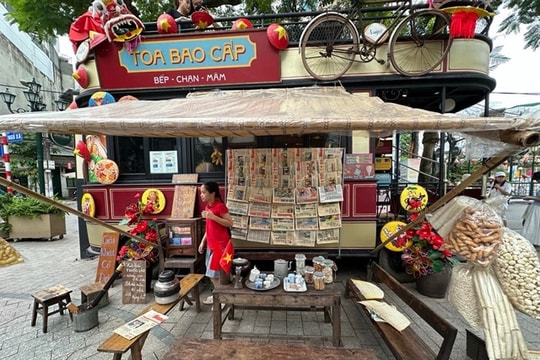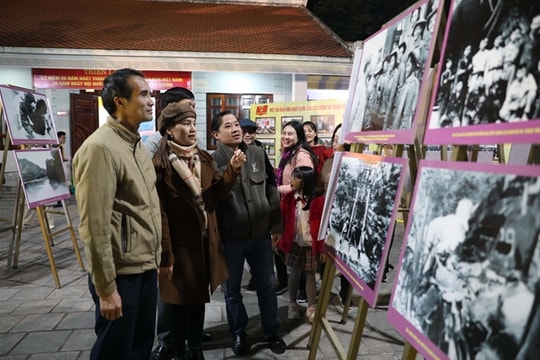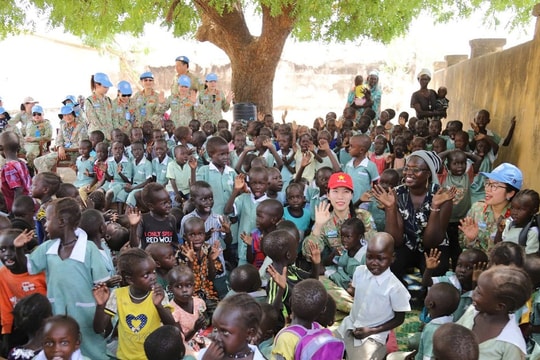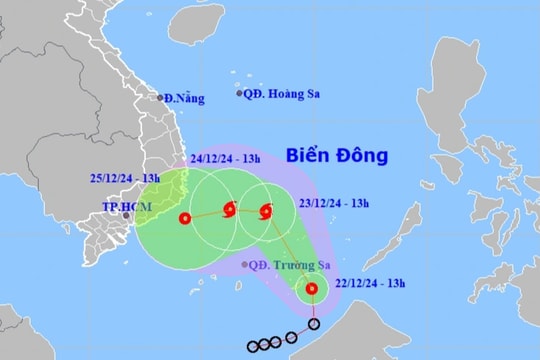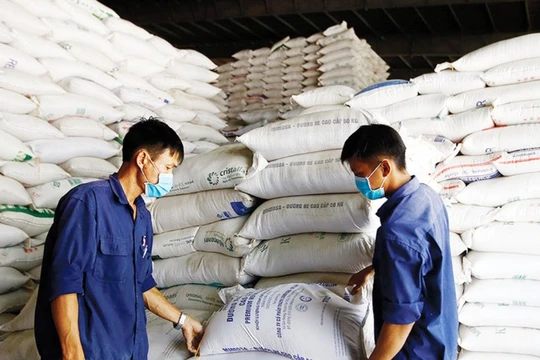 |
| A foreign tourist tries traditional weaving in Quỳ Châu District in the central province of Nghệ An. Photo courtesy of Quỳ Châu District's People's Committee |
NGHỆ AN —As a mountainous district of the central province of Nghệ An, Quỳ Châu is home to 45,580 ethnic people primarily belonging to the Thái group and making up 78.84 per cent of the local population. The ethnic groups have coexisted for generations, primarily relying on agricultural and forestry production for their livelihoods.
Recognising its natural advantages, the district has focused its resources on developing a community tourism model.
Quỳ Châu is a land of enchanting landscapes, filled with a serene and poetic charm. Here, you can find mountains, rivers and captivating attractions that mesmerise all who visit. Those who have set foot at sites like the Đũa Waterfall, the Tạt Ngoi Waterfall, Nặm Pông stream, the ancient Thái village of Hoa Tiến, the Chiêng Ngam Temple or the mountains of Bù Đằng and Phá Xăng are left spellbound.
In line with Resolution No. 07/2020/NQ-HĐND dated July 22, 2020, from the Nghệ An Provincial People's Council in terms of policies to support community tourism development in the province for the 2021-2025 period, Quỳ Châu District has launched several programmes.
These include No. 10-CTr/HU for cultural, sports and tourism development from 2020 to 2025, and No. 60/KH-UBND from the district's People's Committee focusing on tourism development. The goal is to elevate the community tourism landscape and to ensure it is seen as a 'lever' for building new rural areas.
In its development strategy for community tourism, the locality identifies three key areas - Hoa Tiến Village (Châu Tiến Commune), Kẻ Can Village (Châu Bình Commune), and Minh Châu Village (Châu Hạnh Commune) as primary focal points. The establishment of the community tourism destination at Hoa Tiến Village, featuring ten homestays, has become a highlight in attracting visitors.
Quỳ Châu District welcomed about 16,000 tourists last year, including some international visitors, generating an estimated revenue of nearly VNĐ4 billion (US$167,000).
 |
| Waterwheels of Thái people in Quỳ Châu District in the central province of Nghệ An. Photo courtesy of Quỳ Châu District's People's Committee |
Lang Thị Tâm, the owner of Từ Tâm Homestay in Hoa Tiến Village, Châu Tiến Commune, said: “Hoa Tiến village is a famous tourist destination in the mountainous region of Nghệ An. In addition to domestic visitors, we also welcome international tourists seeking unique experiences every year.
“This notable achievement is the result of various factors, primarily the change in mindset among the local people. In the early days of tourism, the community lacked experience and faced challenges, with services being quite monotonous and limited to basic accommodation and simple experiences. Over time, guided by the leadership at all levels, households have connected to form a tighter network.”
The rich cultural identity, along with historical sites and natural attractions, is being viewed by Quỳ Châu District as a key strength for tourism development. The Resolution of the 26th Party Congress of Quỳ Châu district for the 2020-2025 term clearly identifies the preservation and promotion of the traditional cultural values of ethnic minorities in connection with community tourism development as one of the district's three breakthrough areas.
A club has been established in the locality to transmit and promote the essence of the values left by previous generations. The club holds regular meetings, focusing on practising and preserving folk music, folk songs and folk dances; collecting, translating and documenting traditional performances, alongside organising rituals and ceremonies within the community.
According to artisan Sầm Thị Xanh from Hoa Tiến, the club is a gathering place for those with deep expertise, allowing them to effectively pass on knowledge to the younger generation.
“We believe that as long as we live, we must contribute and cannot let our valuable heritage fade away. Our descendants must memorise rituals as well as traditional folk songs. Only then can we ensure this heritage is preserved for future generations,” she noted.
The artisan said that the Thái ethnic group in this region has eight types of folk songs. These folk melodies reflect the beauty of nature, human emotions, labour and production, as well as everyday life. The songs enrich life, dispelling worries and anxieties and replacing them with an abundance of happiness.
According to Trần Văn Hùng, Secretary of the Châu Tiến Commune Party Committee, the people, cultural identity and scenic spots of Châu Tiến Commune, particularly Hoa Tiến Village, are well-suited for community tourism development.
With the attention and guidance from the authorities, along with the determination of the local community, there have been positive results, contributing to the preservation of intangible cultural values and supporting the restoration of traditional stilt houses.
One of the 28 community tourism destinations in Nghệ An Province receiving prioritised resources for development, Hoa Tiến Village in Châu Tiến Commune has seen significant changes. The average income per person in the commune has reached VNĐ52 million ($2,167) per year, placing it among the top in Quỳ Châu District.
Trần Mai Dương, Chief Inspector of the Nghệ An Department of Tourism said several training courses for local officials and residents of Quỳ Châu district to improve the tourism sector have been held in the province.
These training sessions aim to disseminate and update knowledge about new policies, laws, decrees, resolutions, documents and plans related to tourism for related organisations and individuals. Participants have the opportunity to exchange ideas, discuss and resolve difficulties and obstacles in state management of tourism and tourism service business operations.
The ultimate goal is to gradually enhance the quality of tourism services, aiming for sustainable community tourism development linked to the protection of natural resources and the preservation and promotion of cultural values.
“Thanks to these efforts, Quỳ Châu is establishing a unique identity in ecological and community tourism. Despite existing barriers, the region can confidently present a vibrant new vision for tourism development in the upcoming phase,” he added. — VNS






